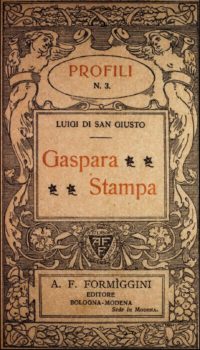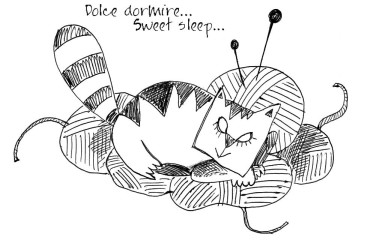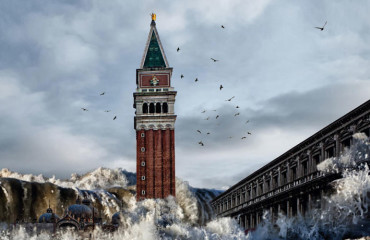
“Thoroughly impressed in red and black will be pretty volumes well bound in parchment-papirus and adorned with illustrations and original friezes […] a sober and astute bibliographical appendix […] a very essential spiritual bread for all those friends of culture […] the most coveted adornment, richer and less costly for all libraries and all the houses […] breeding ground whence will come the new dignity and new forms of the Fatherland”. Thus, at the beginning of the twentieth century, the publisher Angelo Fortunato Formiggini traced the programme of the first of his series: Profiles.
Among the characteristics of a perfect library product, the Modenese publisher indicated an iconographic system specifically created – original – and for this duty he chose an artist who, in the provincial culture of the Po cities, showed a nature markedly similar to his own: innovative, nonconformist, fervent of insights, difficult to reconcile with traditions heavy as boulders. Alberto Artioli, a painter of a short life and father of the famous Alfonso, signed creations addressed not only to the covers, but also the interior, such as headings and initial letters of the Art Nouveau style, nourished by pre-Raphaelite lesson from Beardsley model. His elaborations of typographic mark – always with the motto Amor et labor vitast – in the circular version monogrammed included in the title or in the rectangular, conceived as decoration of the back plate. All volumes published from 1909 to the mid-thirties, but also subsequent reprints even after the passage of the publication to Bietti publishing, carry on the cover and on the title the framework designed by Artioli, the result of a happy reconciliation of details taken from ancient art and a stretch dominated by the dynamism of the most current Art Nouveau curved lines.
Its success – nonetheless its identification power – as part of the editorial design of Formiggini is marked by true upswing in the covers from another collection, inaugurated in 1924: Medals. The Illustrative analogy with Profiles – containing short biographies of various protagonists of the artistic, literary, political, etc. – It was not random and the reasons for that are indicative of a keen mind, “Medals […] dedicated to the figures of our time; to the living. […] They are small Profiles […] shorter biographies and in some sense provisional, dedicated to the figures for which history has not yet delivered a final judgment”. The experiment of Profiles laid the groundwork for what would become the publishing company par excellence of Modena: the Classics of laughter. The importance of humour for Formiggini deserves a wider discussion, here is enough to recall his definition of laughter as “the most specific diagnostic element of the character of individuals’, but what should be noted in the analysis of the aspects illustrative are the names of the artists called to realize the iconographic systems: Attilio Mussino, Emilio Capes, Gustavino, Benito Boccolari, Alberto Martini, Bruno Angoletta, Giulio Cisari to name only the most famous.
All major industry in the first half of the twentieth century, thanks to their stories through images, made the Classic one of the first necklace illustrated with a conscious pretension of art. Yet another – brilliant – gimmick Formiggini.
Cover: Luigi San Giusto, Gaspara Stampa, Modena, A. F. Formiggini, 1909, necklace Profiles, n. 3. Cover, photo @ Alessandro Sgarito
 English
English  Italiano
Italiano 





